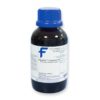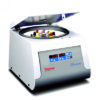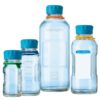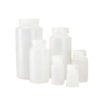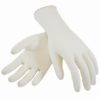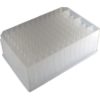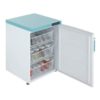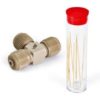- I’ve heard of some samples I should be wary of using standard electrodes in, what are they?
- Standard electrodes use silver ions in their reference system. Proteins, Tris buffers and general biological samples all react with silver ions and this reaction can lead to the electrode having a shorter life span.
- I am having trouble calibrating my meter, what could I be doing wrong?
- Fresh buffer solutions (preferably certified to a known standard) should always be used. The age of an electrode should also be considered. Electrodes have a useful lifetime of approximately 6 months to a year, and should be treated as a consumable.
- How regularly should I calibrate?
- The meter should be calibrated regularly using fresh buffers. If used on a daily/weekly basis, then this should be before each use. If the meter is in constant use throughout each day, then it may better calibrating midway through each day as part of a calibration routine.
- What are the main differences between borosilicate glass and soda lime glass?
- The primary distinction between borosilicate and soda lime glass is the substitution of boric oxide for soda and lime in the manufacturing process. Borosilicate glass has a higher heat resistance and does not expand like soda lime glass, meaning that it is able to handle both extreme heat and cold, making borosilicate very popular for laboratory glassware.
- Why are measuring flasks and beakers never classified as either Class A or Class B?
- Whilst Erlenmeyer flasks and beakers are marked with approximate volume indication, there will always be +/- 5% variability associated with the accuracy of their graduation markings because of the very shape and nature of the products themselves and their means of manufacture. There are only five volumetric measuring devices recognised as suitable for precise and accurate analytical work. These are volumetric flasks, measuring cylinders, burettes and volumetric pipettes and are classified into the two different grades, Class A and Class B.
- What are the differences between Class A and Class B volumetric glassware?
- Laboratory volumetric glassware such as volumetric flasks, measuring cylinders, burettes and volumetric pipettes are produced and calibrated in accordance with American Society for Testing and Materials (ASTM) standards (ASTM predates other standard organisations such as BSI and DIN). They are available as two different grades, Class A or Class B. The ASTM standards define the tolerances within which the markings are placed on the glass. Class A is the most accurate as it has the smallest tolerances, with Class B in general, twice the acceptance range of Class A.
- Can I use ultrasonic cleaners to clean my glassware?
- Ultrasonic cleaning is a good way of cleaning glassware thoroughly. Ultrasonic cleaners that use heaters are the best. Generally, using an ultrasonic cleaner with a mild detergent will clean most residues from glassware. When using equipment to clean glassware, ensure that the items are secure and take extra care when loading and unloading as this is a common cause of chips and breakages.
- What is amber coated glassware used for?
- Amber glass is used in laboratories for the protection of UV sensitive chemicals and materials. Amber glass blocks all UV radiation from 350 to 200nm. The UVC range used for micro-organism sterilisation (between 200 to 280nm) is also cut out, but it is important to stress that not all UV radiation is blocked by amber glass.
- What is the shelf-life of a glass bottle?
- Glass containers do not have an expiration date or a limit to their shelf-life. However, it is important to regularly check your glassware for signs of damage which could lead to a compromise in safety or accuracy. If there are significant signs of damage it should be disposed of and replaced.

